
Culture
17:14, 16-Apr-2019
Notre-Dame: Historic, majestic, and always rising from the ashes
By Sim Sim Wissgott
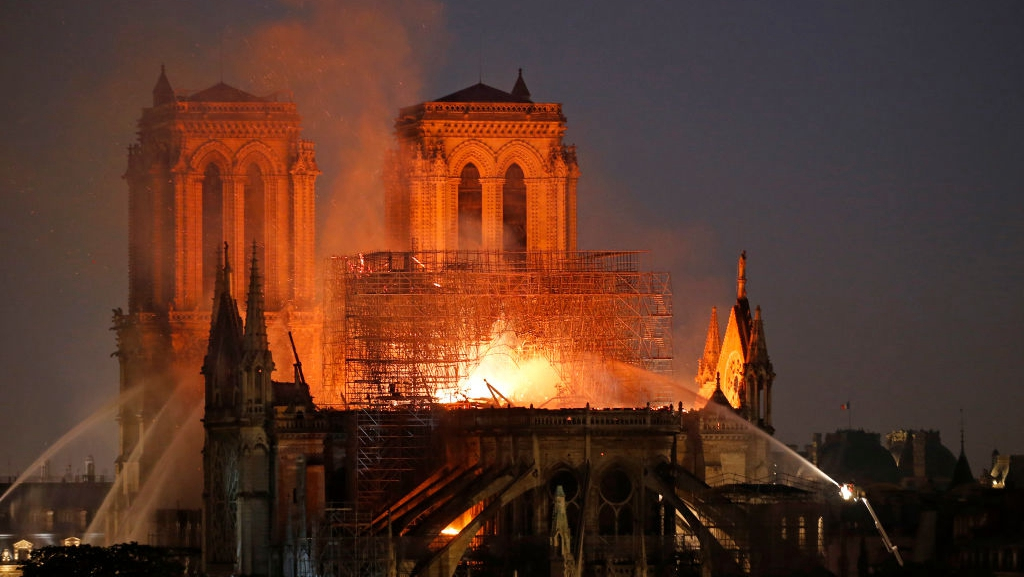
For over 850 years, Notre-Dame de Paris – which was partially destroyed in a raging blaze on Monday evening – has watched over the French capital, inspiring literature, songs, a hit musical and even a Disney animated film.
A feat of architecture, it took over 200 years to complete and dates back to an era of mass cathedral-building in France that also produced the Gothic masterpieces of Reims, Chartres, Strasbourg and Amiens.
Kings and queens were married and crowned here; popes have celebrated mass under the nave; and on August 25, 1944, the bells of Notre-Dame announced the Liberation of Paris from Nazi occupation.
The cathedral's history is tied to some of the most famous names in history: Napoleon Bonaparte, Joan of Arc, Mary Queen of Scots, and more recently Charles de Gaulle and Pope John Paul II.

Promotional shot from the 1996 Disney animated film "The Hunchback of Notre Dame." /Getty Images
Promotional shot from the 1996 Disney animated film "The Hunchback of Notre Dame." /Getty Images
In modern times, the cathedral has become a beloved destination for tourists, perched on the Île de la Cité in the middle of the Seine, and welcoming some 13 million visitors per year.
A grand design for Paris
The cathedral was the brainchild of the Bishop of Paris, Maurice de Sully. A smaller cathedral already existed on the site but was destroyed to make way for a grander design to match Paris's growing might.
The first stone was laid in 1163. But the imposing towers were only completed in the mid-13th century. Further work was carried out in phases over time.
For centuries, Notre-Dame – with its 69-meter high towers – dominated central Paris, dwarfing the surrounding houses and streets.
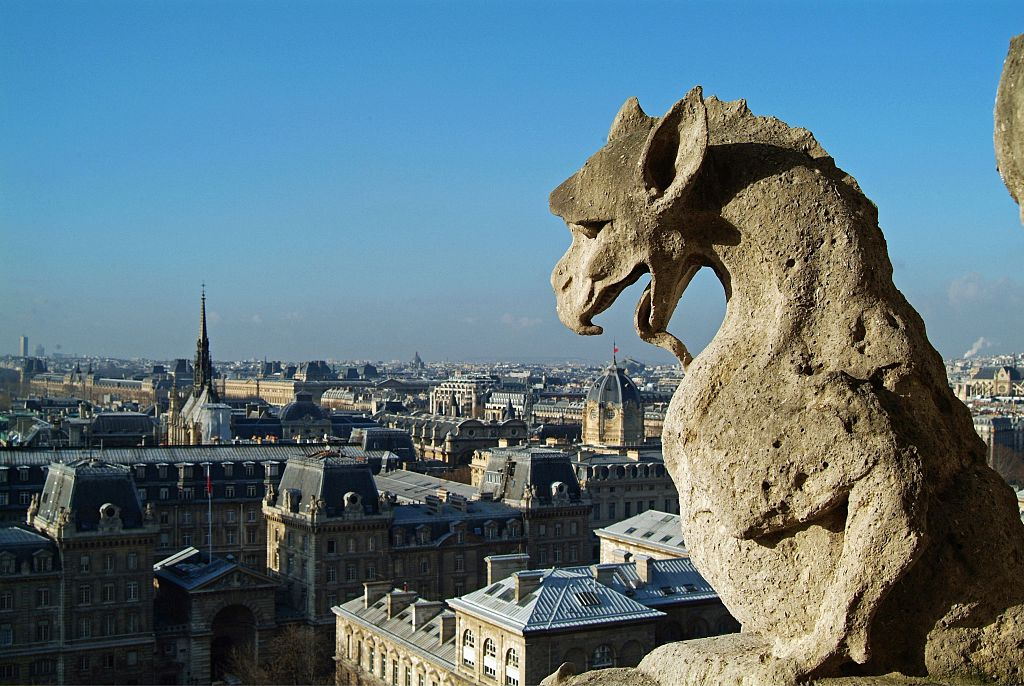
Gargoyles on the facade of Notre-Dame Cathedral, Paris, France. /Getty Images
Gargoyles on the facade of Notre-Dame Cathedral, Paris, France. /Getty Images
The nave with its high vaulted ceiling, the distinctive flying buttresses, the fantastic gargoyles looking out from the parapets and the ornate stained glass windows have fascinated and awed generations of faithful and non-faithful alike.
Even today, Notre-Dame stands out on its island, somewhat isolated from the Parisian bustle, making Monday's fire all the more devastating, as Parisians in every direction witnessed the flames licking at the medieval structure, while billowing clouds of smoke went up into the spring sky.
19th-century ruin
This was not however the first time the cathedral experienced destruction.
Many of its statues were decapitated during the French Revolution and the cathedral's spire was taken down. The treasury was ransacked and Notre-Dame's heavy bells were melted down to make cannons.
By the early 19th century, the landmark was in a state of ruin, with stories even being told of birds flying in and out of the broken windows.
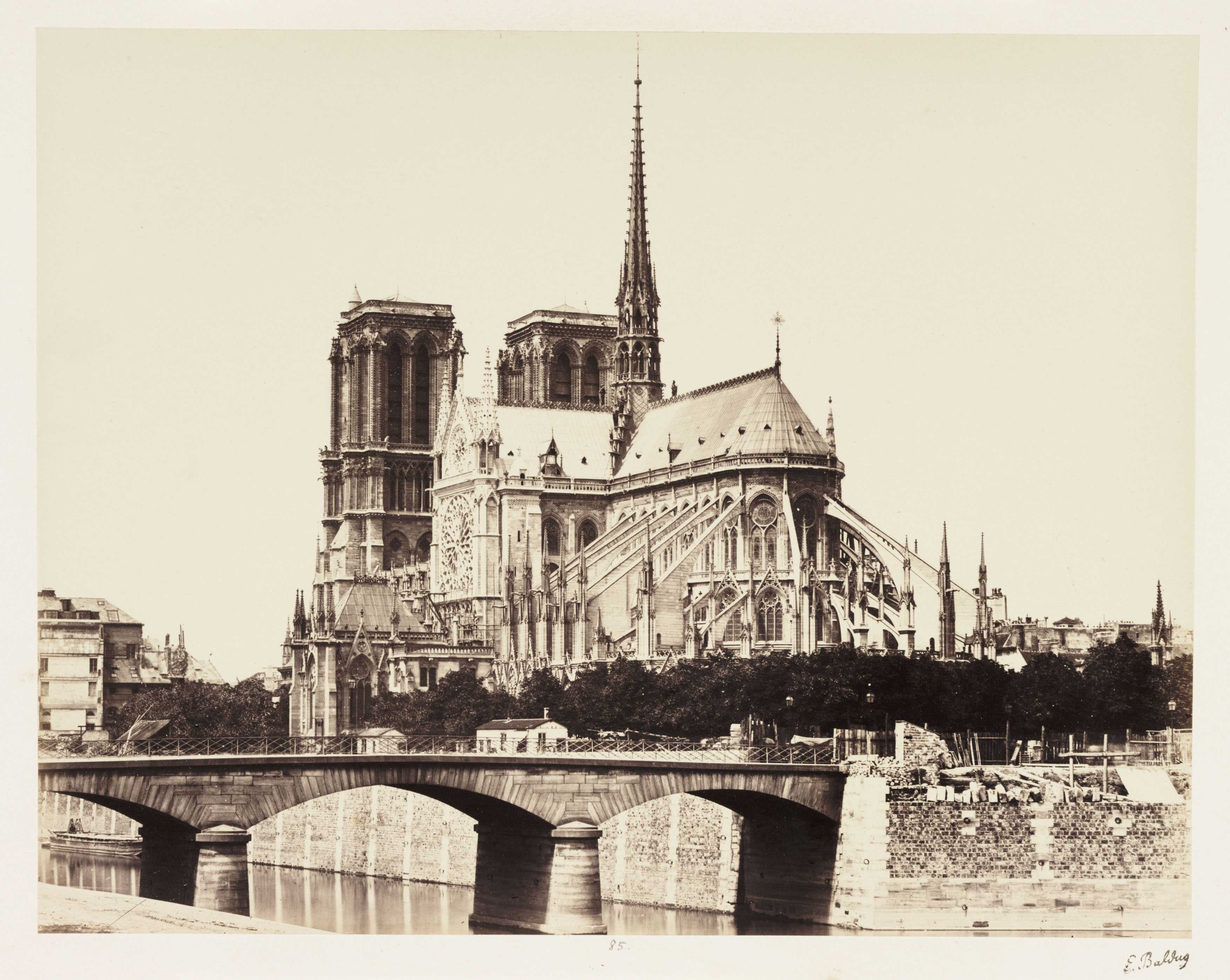
A picture of Notre-Dame taken by Edouard-Denis Baldus around 1865. /Getty Images
A picture of Notre-Dame taken by Edouard-Denis Baldus around 1865. /Getty Images
Outraged, novelist Victor Hugo penned his 1831 novel "Notre-Dame de Paris," better known in English as "The Hunchback of Notre-Dame."
"It is difficult not to sigh, not to be indignant when one sees the degradation, the countless mutilations which time and man have simultaneously subjected this venerable monument to," he wrote.
Hugo is now widely credited with rescuing Notre-Dame. In 1844, the French government agreed to renovate the crumbling structure. Over the next 20 years, chief architect Eugène Viollet-le-Duc returned it to its previous glory, restoring sculptures, murals and stained glass windows, and reinstating the spire, which collapsed on Monday.
A UNESCO World Heritage site, Notre-Dame had again been undergoing renovation work lately.
In an interview last week, Philippe Villeneuve, chief architect for French historical monuments, noted that no work had been done on the spire or the dozen statues that adorned it in a century or more.
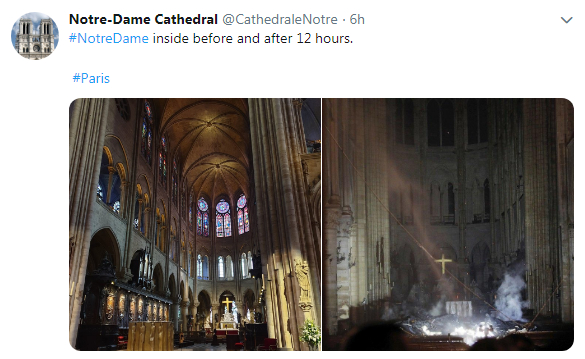
CGTN screenshot of a post on Notre-Dame Cathedral's official Twitter feed, showing snapshots of the interior before and after the fire.
CGTN screenshot of a post on Notre-Dame Cathedral's official Twitter feed, showing snapshots of the interior before and after the fire.
'Part of our destiny'
With firefighters still battling the flames late Monday, French President Emmanuel Macron vowed: "We will rebuild her," describing the cathedral as "part of our French destiny."
"Notre-Dame de Paris, it's our history, our literature, part of our psyche. It is where we have experienced all our great moments, our epidemics, our wars, our liberations. It's the epicenter of our life."
Macron meant this quite literally: the zero mark from which all distances are measured in France is situated in front of the cathedral.
Notre-Dame's impact on arts and culture also extends far beyond Hugo's novel. The tale of the hunchback bellringer Quasimodo and his beloved Esmeralda has been adapted for the stage and the big screen numerous times.
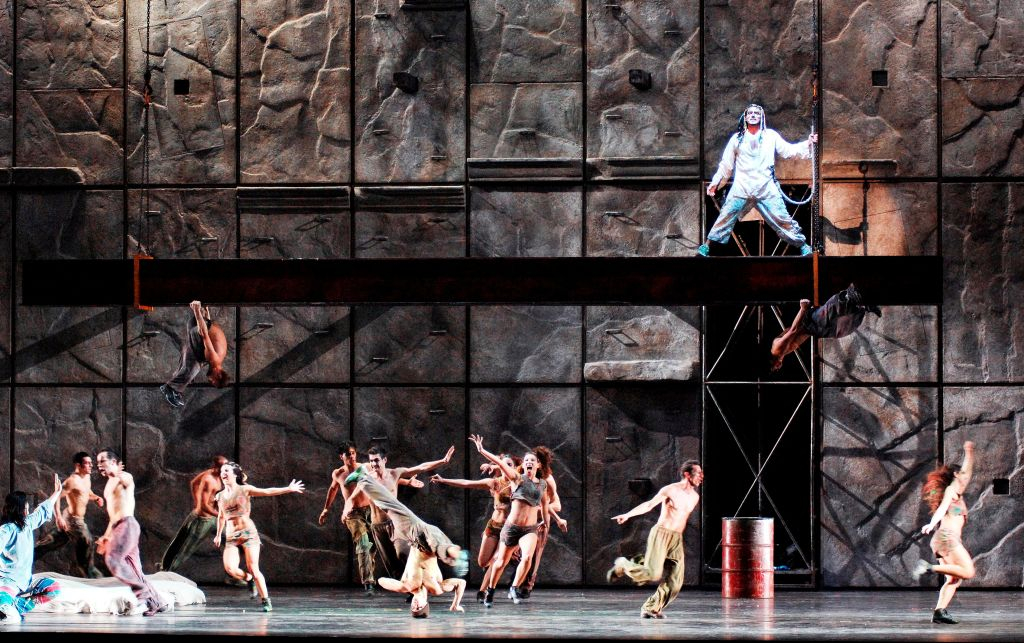
The musical "Notre-Dame de Paris" is performed in Milan, Italy, 2009. /Getty Images
The musical "Notre-Dame de Paris" is performed in Milan, Italy, 2009. /Getty Images
There have been operas, plays, live films with the likes of Maureen O'Hara and Anthony Hopkins, animated TV series and comic books. Acclaimed French choreographer Roland Petit turned the story into a ballet, while a 1998 musical version has proven an international hit, even traveling to China.
Within hours of the blaze igniting, Macron already called for a national fundraising campaign to finance the cathedral's restoration. French billionaire François-Henri Pinault meanwhile pledged 100 million euros towards rebuilding Notre-Dame.
While the wooden frame went up in flames, much of the main structure and the towers were saved, according to the fire department.
(Cover picture: Flames and smoke are seen billowing from the roof at Notre-Dame Cathedral in Paris, France, April 15, 2019. /Getty Images)

SITEMAP
Copyright © 2018 CGTN. Beijing ICP prepared NO.16065310-3
Copyright © 2018 CGTN. Beijing ICP prepared NO.16065310-3